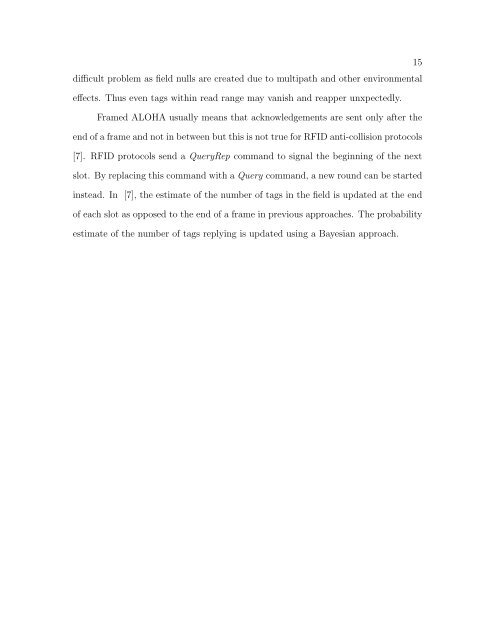utilizing physical layer information to improve rfid tag
utilizing physical layer information to improve rfid tag
utilizing physical layer information to improve rfid tag
You also want an ePaper? Increase the reach of your titles
YUMPU automatically turns print PDFs into web optimized ePapers that Google loves.
difficult problem as field nulls are created due <strong>to</strong> multipath and other environmental<br />
effects. Thus even <strong>tag</strong>s within read range may vanish and reapper unxpectedly.<br />
Framed ALOHA usually means that acknowledgements are sent only after the<br />
end of a frame and not in between but this is not true for RFID anti-collision pro<strong>to</strong>cols<br />
[7]. RFID pro<strong>to</strong>cols send a QueryRep command <strong>to</strong> signal the beginning of the next<br />
slot. By replacing this command with a Query command, a new round can be started<br />
instead. In [7], the estimate of the number of <strong>tag</strong>s in the field is updated at the end<br />
of each slot as opposed <strong>to</strong> the end of a frame in previous approaches. The probability<br />
estimate of the number of <strong>tag</strong>s replying is updated using a Bayesian approach.<br />
15
















